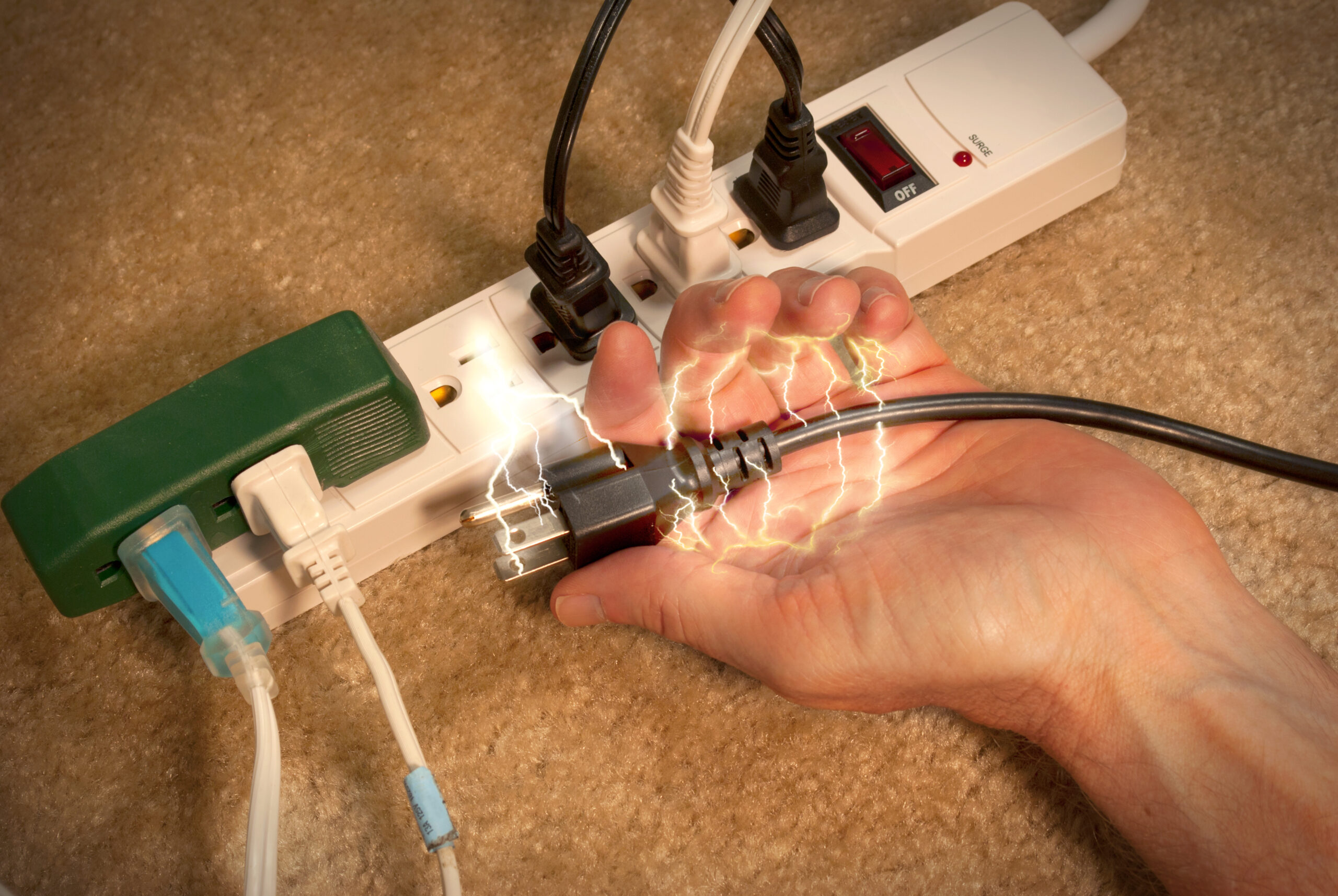Today’s homeowners are smarter because of the internet. How-to videos and procedures are only a click away but DIY (do-it-yourself) homeowners usually avoid electrical projects because of the risks. Here’s what you need to know about protecting your family and avoiding electrical injuries.
DIY Electrical Injuries
Completing an on-your-own project at home feels good. However, working with electricity is usually beyond the average homeowner’s skill level. Electricity is unpredictable. There are 400+ electrocutions and more than 4,000 electrical injuries every year in the United States. Most electrical injuries involve shocks or burns.
The majority of home improvement projects aren’t electrical, but they almost always involve working with electricity. The Electrical Safety Foundation International (ESFI) says 15% of electrocutions are related to consumer products and wiring hazards.
Follow these safety tips before tackling any DIY project:
- Don’t undertake any home improvement project that is beyond your skill level or dangerous. Smart DIYers know when to call a professional.
- If your DIY project involves electricity, don’t touch plumbing or gas pipes.
- Learn about your home’s electrical system. In addition to property-specific information (common electrical installations the year your home was built), familiarize yourself with:
- Electrical service panels
- Extension cords
- Home wiring systems
- Outlets and receptacles
- Take special care when working with power tools and exposed electrical wiring. Eight percent of consumer product-related electrocutions each year are attributed to electrical accidents with:
- Drills
- Hedge trimmers
- Sanders
- Saws
- …and other electric power tools
- Turn off the power to the circuit you’ll be working on if you attempt any electrical project. Then test the wires to make sure the power is off.
- Unplug appliances and electrical devices you’ll be working on.
Power Tools & Electrical Safety
Never use power tools without GFCI protection. Other electrical safety tips for using power tools are:
- Avoid using power tools with extension cords longer than 100´.
- If your power tool trips a safety device, stop. Take the tool to a repair center.
- Know where electrical wires are located before cutting/drilling into walls.
- Read the manufacturer’s instructions before operating a wet/dry vac or pressure washer.
- Use tools with insulated grips.
- Wear appropriate personal protective equipment. (You wouldn’t mow your lawn barefoot…) Make sure you have:
- Dust masks
- Gloves
- Safety goggles
- …and all safety gear recommended by the manufacturer
- When using power tools for cutting and drilling, know where plumbing pipes are located behind walls/under flooring.
May Is Electrical Safety Month: Protect Your Family From Electrical Risks
You never think about sappy sayings like “Home is where the heart is,” until something catastrophic happens – and it hits you where you live. Protecting your family from electrical risks is a priority.
Be sure to teach your kids:
- Ask an adult for help using new electronics.
- Don’t climb trees near power lines.
- Don’t fly drones/kites near power lines.
- Don’t plug too many things into one power strip.
- Don’t put fingers/objects into outlets.
- Don’t touch outdoor transformer boxes.
- Don’t use electronics near water or with wet hands.
- Don’t yank cords to unplug them.
There are also electrical safety websites and books, especially for children.
Always keep electrical appliances like hairdryers, toasters, coffeemakers, etc. unplugged and out of children’s reach. Turn It On Electric pros have home protection ideas for your family.
Ask us about:
- Adding/moving electrical outlets
- How to secure power cords
- Installing a residual current device (RCD) safety switch
- Minimizing extension cord use
- Repairing/replacing damaged outlets, receptacles, and frayed wiring
- Wiring insulation
Our most important electrical safety tip for May is to stay away from DIY electrical projects and contact TIO Electric. We welcome your questions!











